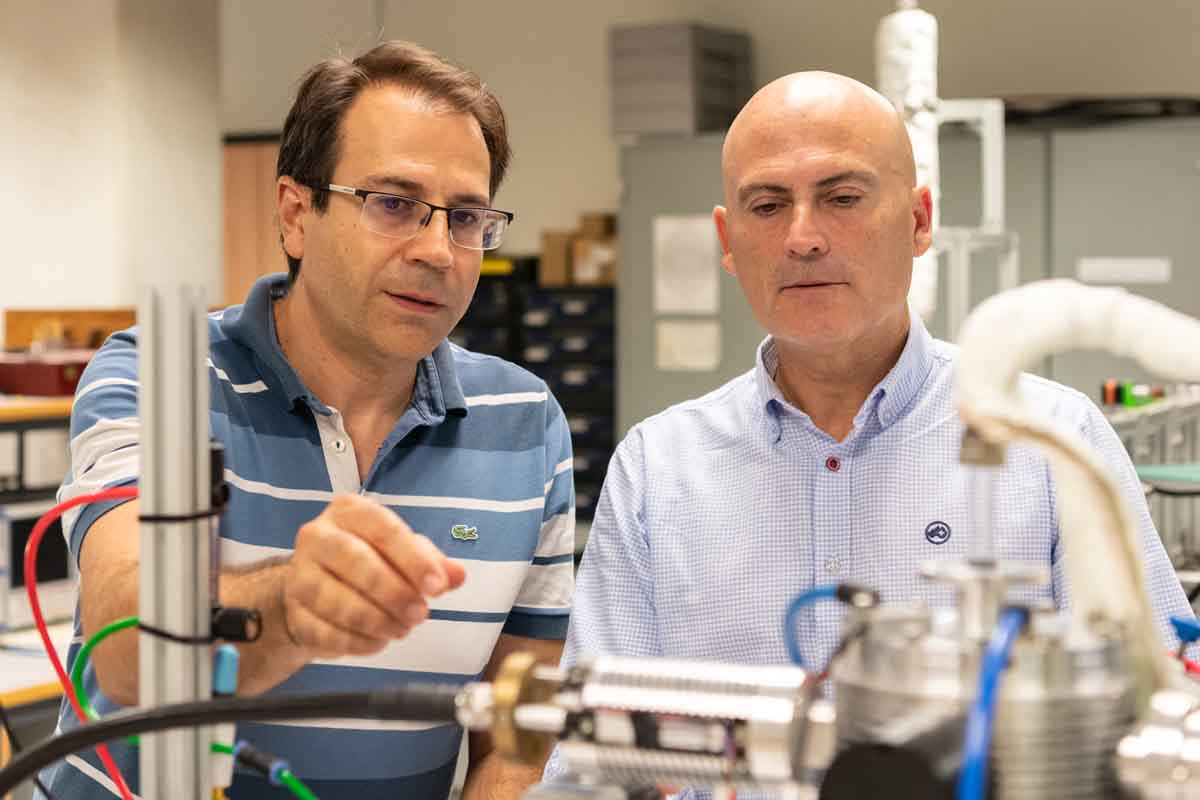New materials optimized for microwave hydrogen production improve energy efficiency by reducing process complexity

©Institute of Information and Communications Technologies (ITACA)
Hydrogen production has traditionally required high temperatures, making the process complex and costly. However, did you know that microwaves could potentially change this? By utilizing a chemical redox cycle, scientists have significantly reduced the necessary temperature, making the process much simpler and more efficient.
A team of researchers from the Institute of Chemical Technology (ITQ) and the Institute of Information and Communication Technologies (ITACA) has developed an innovation that promises to revolutionize green hydrogen production. Through the use of microwaves, they have overcome challenges associated with high operating temperatures, paving the way for a more efficient and less complex process, as explained by the researchers:
“The main novelty of this work is the comprehensive study of the properties of materials that determine the performance of the process. The foundation has been laid for the design of materials to adapt the production of oxygen and hydrogen and to regulate the energized state of the material depending on the desired application. Furthermore, it has been demonstrated that oxygen can be extracted through a very rapid and highly controlled pulsed process.”
Enhancing green hydrogen production: the role of microwaves and advanced materials
As mentioned, in the realm of hydrogen production technologies, steam electrolysis and solar thermochemical cycles using reducible solid oxides are promising but face challenges due to high operating temperatures. The microwave-driven chemical redox cycle allows for direct and contactless electrification of the process while simultaneously reducing operational temperature and complexity.
The research focuses on using microwaves to improve redox cycles, enabling the production of green hydrogen from renewable electricity. Microwaves offer unique advantages, such as reducing the cycle’s temperature from approximately 2,370°F to 752°F, making the process more efficient and economical, as explained by José Manuel Serra, director of ITQ:
“During the research, a detailed study was conducted on the influence of various dopants introduced into the material matrix (cerium oxide) to regulate interaction with microwave radiation and the properties of the resulting energized material. Subsequently, the hydrogen production capacity of this material and the mechanism governing the process were studied, thus facilitating the future design of materials.”
The study examined how different dopants introduced into cerium affect hydrogen production by enhancing interaction with microwaves. This leads to more effective hydrogen production and lays the groundwork for future innovations.
Source: Institute of Information and Communications Technologies
